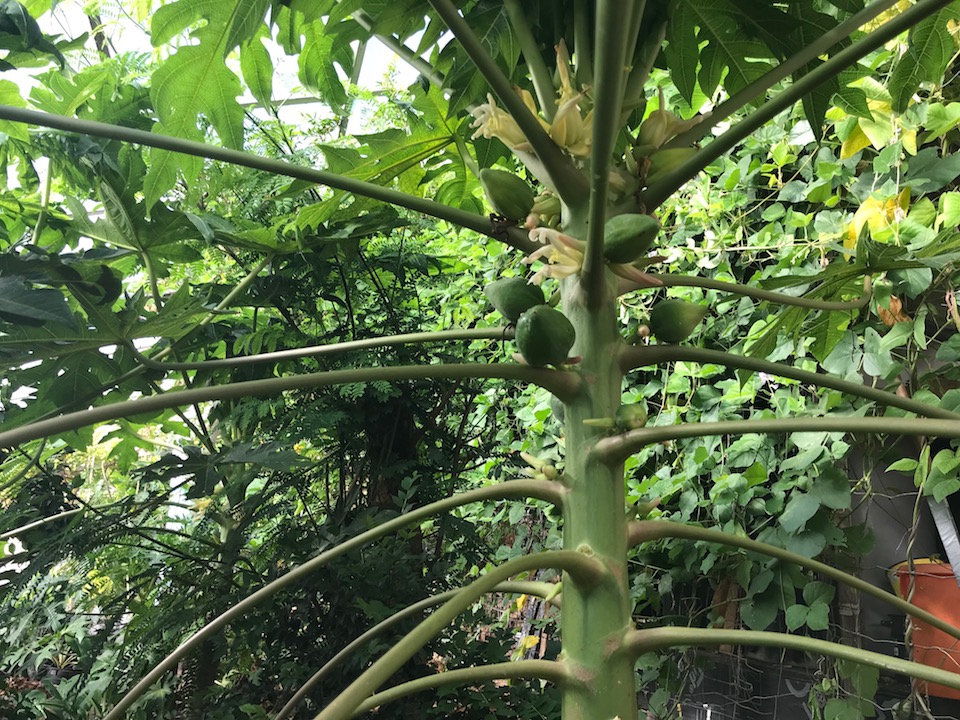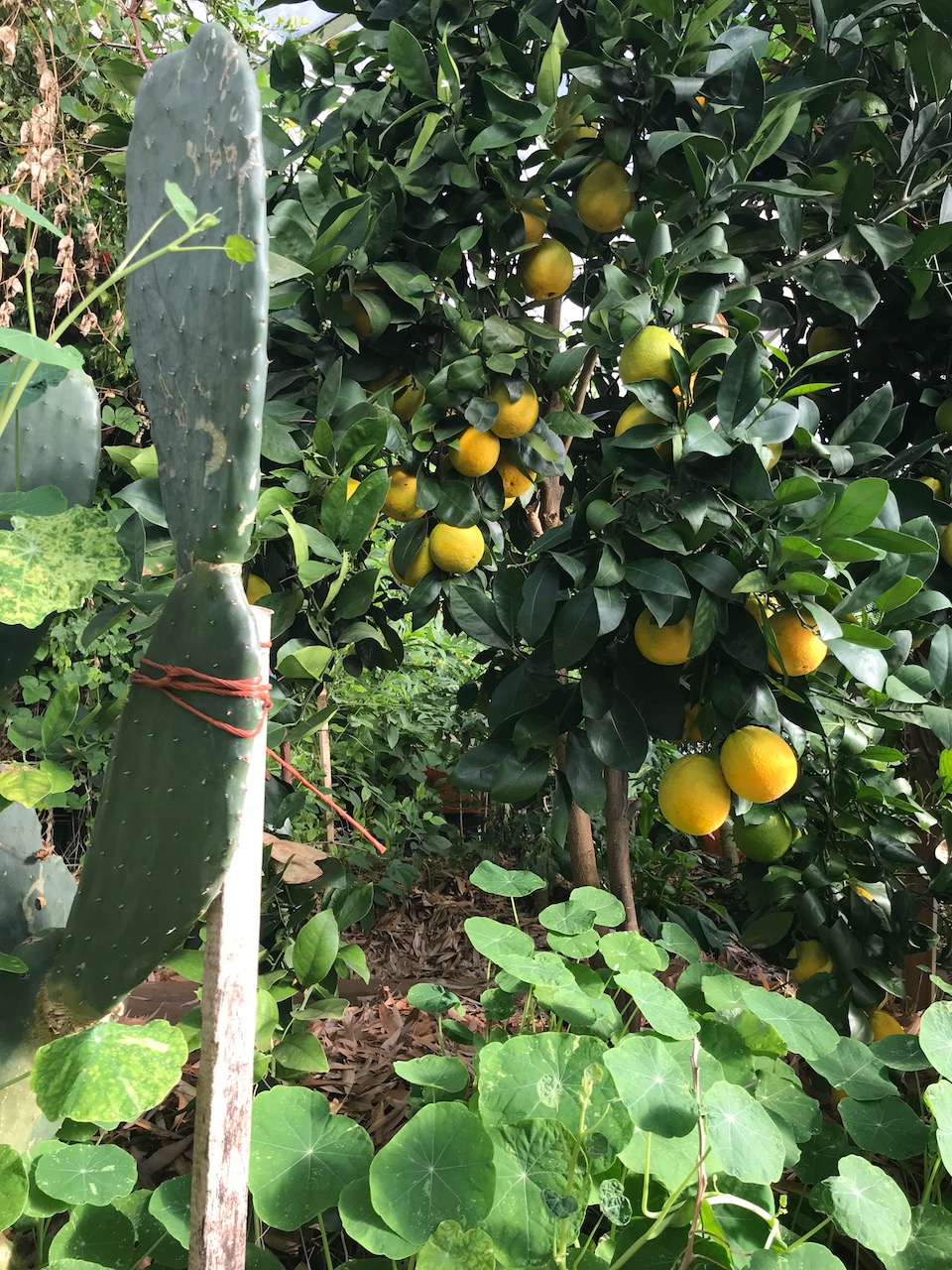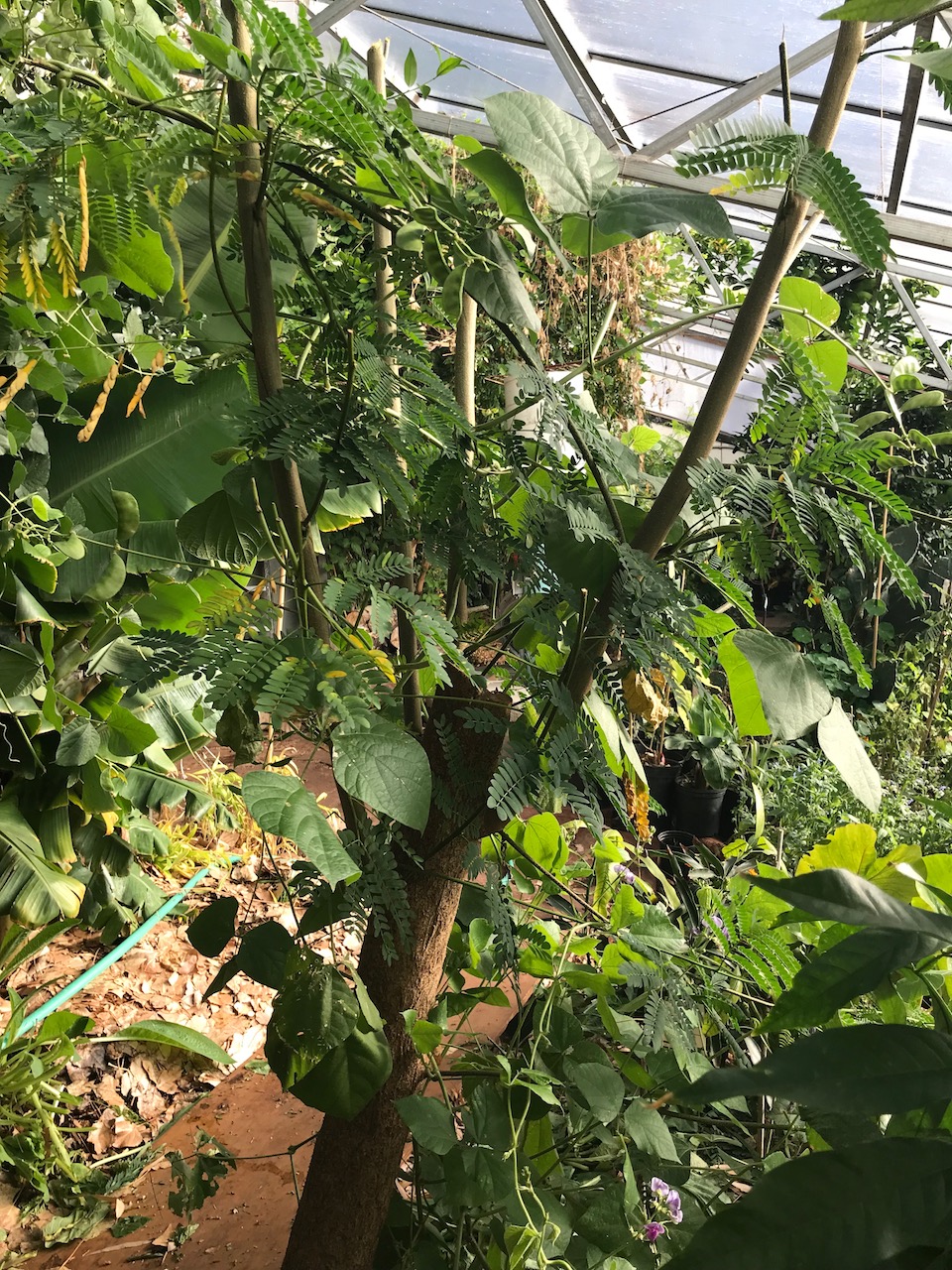The winter of 2018 will mark the 9th planting year of the 72’, near net-zero energy usage tropical greenhouse at the Central Rocky Mountain Permaculture Institute, located at an altitude of 7,200’ in the mountains of Colorado. While many aspects of a typical tropical agroforestry system apply to this tropical oasis in the snow, the controlled nature of the environment provides additional considerations, and sometimes challenges. Without dramatic weather events such as hurricanes, and wet and dry seasons as factors to work with, there is, in effect, a controlled plant laboratory, with active soils and a functioning ecosystem, allowing for research to be conducted on plant responses to isolated factors such as different guild plantings, natural fertilizers, and pruning.
In the first year of the greenhouse, we built soils by sheet mulching and planting annual vegetables. In the second year, we began planting perennial pioneer species along with nitrogen fixing trees and beans with a few climax species. This plant assemblage was composed of leucaena, pineapple, babaco, passionfruit, and citrus. Annual and perennial vegetables (yacon, sweet potato…) were then planted as a mid-story, and as things progressed, medicinal herbs (spilanthes, brahmi, gotu kola…) were added as understory and groundcover. We maximized our understory, mid-story, and overstory over time so that we are always obtaining a yield from something. Certain plants, such as avocado, have never fruited for us, but we’ve had great success with citrus, bananas, highland papaya, passion fruit, and nitrogen fixing trees and fertilizer beans (Figure 1, 2). This period of development is covered in more detail in my book, “The Forest Garden Greenhouse,” published by Chelsea Green.

Once the polyculture was established and the soil food web activated, there have been very few problems with pests compared to outside in the tropics. Pests, mold, and disease are kept at bay by spraying comfrey tea and compost tea, continual mulching, using worm castings from the pathway as fertilizers, and maintaining a good habitat for the beneficial insect population. Now in our 8th year, we have our lowest pest pressure yet. Lacewings, ladybugs, and predatory wasps live year-round in the greenhouse. This is also happening outside in our one-acre forest garden during the spring, summer, and fall. In warm months during the day, the greenhouses are always open, allowing for beneficial and pollinating insects to come and go freely.

Heavy rains in the tropics wash soil nutrients away, heavy mulching and earthworks such as terraces help, but in the greenhouse, we are constantly building nutrients and they are all made available to the plants by the soil food web. We do not do alley cropping in the greenhouse, but we use a technique where a leucaena or another nitrogen fixing plant (legume) is planted with two or three tropical fruiting plants around it, the leucaena, pigeon pea, acacia, or gliricidia becomes the fertilizer tree for the surrounding tropical fruiting plants. Legume biomass, after coppice or pollarding, can be laid down as mulch, or used as fodder for animals. Each time legume plant is coppiced, it releases nitrogen into the surrounding soils through its roots, benefiting its companions.
We have recently pollarded three mature leucaena with trunks about four inches in diameter, down to four feet, to open up the canopy for surrounding plants (Figure 3). We planted a lablab bean just near one of the trunks, which has climbed up and become intertwined with the new growth. Now, after three months, the canopy has completely reestablished itself, and we have begun coppicing it again. This is a renewable resource of nitrogen, which has been able to provide important nutrients to both the surrounding mango, Brazilian cherry, and ginger, as well as food for our rabbits.

We are always trying new things, like noni, jackfruit, durian, saffron, to determine the different possible niches where new plants could fit in. Every plant will be a learning opportunity. What we are really doing is growing an experience, growing the ark. Our primary yield is being able to experience a tropical ecosystem right here in our backyard. The ambiance and the environment within the greenhouse is something you cannot find anywhere else.
